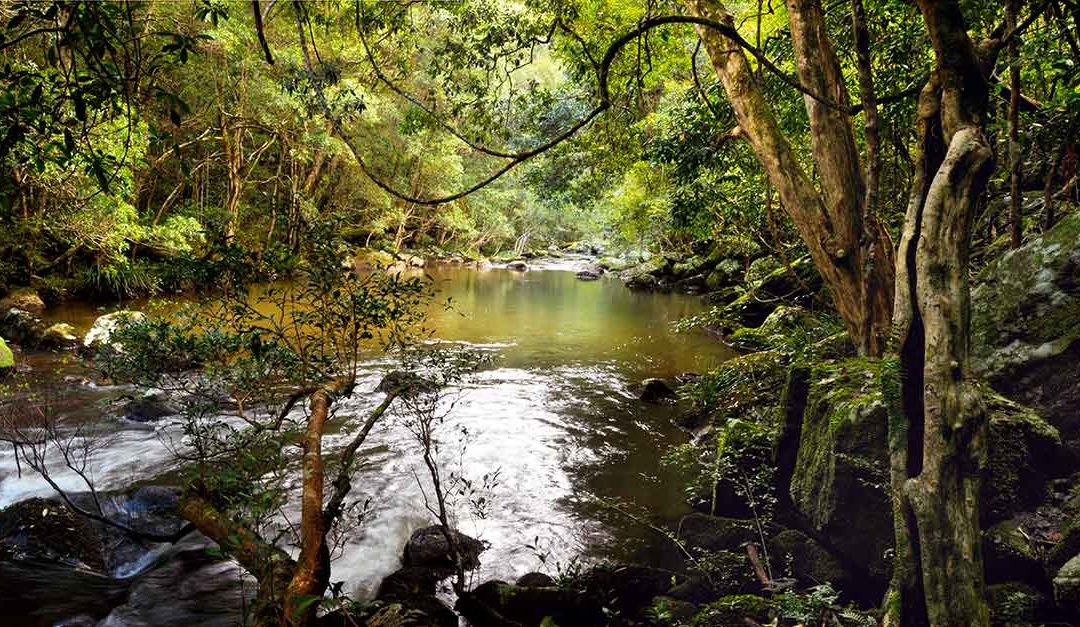
We have not heard much about the Dunoon Dam lately and many people are asking “What is happening with that dam?”
The short answer is that Rous is definitely planning on building the Dunoon Dam as part of Stage 3 of its Future Water Project.
Six of the eight councillors on Rous are strongly in favour of the dam. They will decide whether it goes ahead. These same six councillors circulated a petition in 2021 which specifically discounted all permanent water supply options other than a new dam. Based on that petition they do not accept recycling (“toilet to tap” as they call it), or groundwater, or desal plants.
Kerb-side push-poll signatures for this petition were collected by asking “do you want to drink toilet water or do you want a new dam?” Rous incorrectly counted 1000’s of these signatures as valid submissions to its public consultation process for its revised Integrated Water Cycle Management Plan in 2021. (This was the plan which excluded the Dunoon Dam). The result was an apparent majority in favour of the dam.
However, all of the other submission processes since 2020 have been overwhelmingly against the dam:
- Rous’ consultation on the Future Water Project in mid-2020: 98% against the dam
- Dept Planning and Environment (DPE) consultation on the Draft Far North Coast Regional Water Strategy in late-2020: 95%against the dam
- DPE consultation on the 2nd Draft Far North Coast Regional Water Strategy in 2022: 97%against the dam
There is clearly a lack of social licence for the dam and a strong social movement against it.
The DPE released the final Far North Coast Regional Water Strategy in June 2023. The dam was not included in the short list of options. They took account of the strong community opposition, the “major to extreme” environmental effects, and the lack of cost effectiveness of the dam.
Nevertheless, the DPE has not precluded Rous and the four LGAs (Lismore, Ballina, Byron and Richmond Valley) from going it alone in their pursuit of the dam. The dam could still be constructed by Rous, despite the evidence that the dam is not viable economically, socially, culturally, environmentally, or in the provision of drought or flood security.
For those who are new to this issue here are some of the reasons why this community and region do not need the Dunoon Dam.
Cost
The original $220 mill cost of the dam is now estimated by DPE at $514 mill, or $841 mill if the service area were extended to include independent water supplies such as Nimbin and Mullumbimby.
Dam construction habitually blows out by 50% so this figure could be expected to rise. This huge upfront cost would place a large financial burden on residents who would be paying water storage costs from day one without any benefit for forty years or more.
With government funding unlikely, it would be financed primarily by current and future water users.
Rous has not provided an estimate of the effect of the dam construction on the price of bulk water to the LGAs. That would be helpful in order to work out what ratepayers would have to pay in extra charges.
For the many people who are already struggling, inflated water rates would be an
additional but unnecessary hardship.
Water security
The proposed 50 GL dam would have 3.5 times the capacity of the 14 GL Rocky Creek Dam upstream but has only half the catchment area. Rocky Creek Dam holds roughly one year’s supply of water. With 4 years of minimal rain and no wet season, both Rocky Creek and Dunoon dams could be empty. A full dam in a flood year is no security for a prolonged drought.
Dams no longer defeat drought, especially when global heating is already making extreme droughts and floods more likely. Droughts more than a decade long have been recorded in the past and will be more likely in the future. The DPE explains the evidence clearly in the Regional Water Strategy.
In a warming climate with increasingly erratic rainfall, water supplies that are rain-dependent are inherently insecure. The high cost and the all-water-in-one-bucket approach of a new dam would impede other water strategies that show a higher cost/benefit ratio, i.e. they would cost a great deal less and provide real benefits.
Water authorities and governments recognise the need to reduce dependence on rainfall; 50% non-rainfall dependent supply is recommended. The region supplied by Rous already has a dam. Now we need the numerous other sources and strategies to be implemented so that we have true water security. Well-funded water efficiencies have been proven repeatedly to be the quickest way to
obtain the most water for the least cost.
Catastrophic events can occur, making a new dam a less safe option that the alternatives. Blue-green algae contamination already occurs at Clarrie Hall Dam and Emigrant Creek Dam. Increased heat and evaporation makes contamination events more likely.
Dam failure is not out of the question. In the 2022 flood, Rocky Creek Dam came so close to over-topping, and hence failing, that downstream residents were warned by text “Dam failure. Evacuate now”. If the earth-wall dam did fail and the released water hit a rolled-concrete wall a few km downstream the results would be unthinkable. Such extreme flooding as we saw in 2022 may well be exceeded in the future.
As for flood mitigation, over 1000 GL of water moved through Lismore in the 2022 flood. A 50 GL dam upstream, even if completely empty at the start of the event, could do very little to reduce that volume. And then, to be ready for the second flood a month later, it would have to be immediately emptied into an already flooded landscape.
Cultural effects
The Widjabul Wia-bal people of the Bundjalung nation have said repeatedly since the dam was first proposed in 1995 that they do not accept it. In 2011, senior knowledge holder Uncle John Roberts, revealed to anthropologists the location of a burial ground and other significant evidence of Aboriginal occupation at the site (2011 Dunoon Dam Cultural Heritage Impact Assessment (CHIA)).
Two years later, this information was confirmed in the 2013 CHIA in which the eminent archaeologist, Dr Douglas Hobbs, stated that the burials were likely to be pre-European.
Rous has decided to impose yet another study on the Widjabul despite their resistance and their determination to follow Uncle John Roberts’ wishes of “No dam, No more studies”.
This site is Australian heritage; we must not lose it.
Environmental effects
The DPE’s Draft Strategy determination that the environmental effects would be “major to extreme” deals just with the aquatic ecology.
The terrestrial effects would be even worse. The Dunoon Dam Terrestrial Ecology Impact Assessment of 2012 revealed that an Endangered Ecological Community of lowland subtropical rainforest would be destroyed by the construction of the dam. This rainforest on the western edge of the Big Scrub represents about 6% of the remaining 1% of the original Big Scrub.
72 ha of Koala habitat would be drowned, cleared or fragmented. Koalas are now classed as Endangered, mainly because of loss of habitat, which drives deaths from disease, car strike and dog attack. Three km of Platypus habitat in Rocky Creek would be lost – a big lake is not what Platypus need.
A new environmental study is to be done, insisted on by the pro-dam councillors. We can expect it will recommend offsets which will propose setting aside some non-alike vegetation to compensate for the destruction of the subtropical and warm temperate rainforest at the site. Rous has already proposed revegetating the weedy slopes at the site as an offset for the unique warm temperate rainforest on sandstone in The Channon Gorge.
The Indigenous and environmental issues both face considerable Federal cultural and environmental heritage hurdles. These are effectively what stopped the dam in 2020, before it was put back on the table by populist politics.
The Dunoon Dam is being promoted primarily to cater for unsustainable growth of housing and tourism on the coastal strip. This should not be at the expense of our beautiful hinterland.
Please keep informed and be prepared to continue defending this precious place.


Recent Comments